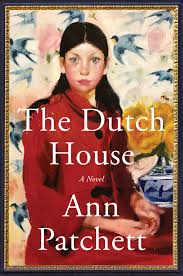Chapter 12
byChapter 12 serves as a pivotal moment in the narrator’s life, marking a transition from the demands of medical residency to a more settled, predictable routine in Manhattan. After a period of intense focus on his medical career, he now finds himself in the process of making a home, both literally and emotionally, by renovating an apartment and building a deeper connection with Celeste. The newfound stability brings a sense of normalcy, yet the tranquility of this phase is abruptly disrupted when Maeve reaches out, urging him to meet with Fluffy at the Hungarian Pastry Shop, a name tied to their past and long-forgotten memories. This meeting, seemingly ordinary, sparks a cascade of emotions, revealing how deeply the past is intertwined with the present, as well as opening doors to old feelings of abandonment and unresolved family dynamics.
The encounter with Fluffy becomes more than a simple reunion—it is a journey into the heart of the narrator’s past, revealing the profound and often painful complexities of family life. Fluffy’s revelations shake the foundation of everything the narrator has believed about his family, especially when she shares that their mother, whom they had all presumed to be gone, is alive and residing in the Bowery. This discovery triggers a flood of emotions—resentment, confusion, and disbelief—especially as the narrator grapples with the realization that his mother has been within reach all these years, yet remained absent from his life. Fluffy’s update forces him to confront unresolved questions about his mother’s choices and the pain her departure caused. What’s more, the news stirs a deep-seated need for answers about why she chose to leave them and why she’s stayed away for so long, despite being so close geographically.
This chapter shifts between past and present, illustrating how deeply childhood experiences shape the course of adulthood. The juxtaposition of the narrator’s current success in life, contrasted with the emotional weight of his history, highlights the tension between personal growth and the ghost of past wounds. As he listens to Fluffy, the narrator is forced to reckon with the realization that his memories and feelings towards his mother were shaped not just by her departure, but by a lack of understanding about the forces that led to her actions. This moment of discovery pulls the narrator into a complicated emotional landscape, where the desire for closure battles with the fear of facing the truth. The pain that has festered for so many years is still palpable, and yet the possibility of finally confronting it, understanding it, and perhaps even letting it go seems to offer a chance for personal healing.
In many ways, Chapter 12 centers on themes of memory, abandonment, and the intricate dance of forgiveness within the family. The idea of closure, or the lack thereof, runs through the narrative like a thread, with the narrator’s emotional state shifting between the grief of abandonment and the hope of eventual reconciliation. The complexities of family relationships, especially those forged through both presence and absence, are explored in depth, showcasing the narrator’s struggle to understand his mother’s choices while attempting to live a life shaped by his own experiences. As the chapter unfolds, the narrator is forced to look inward, considering how much of his current identity has been influenced by the family dynamics he’s left behind. This confrontation with the past challenges him to take ownership of his narrative, recognizing that understanding his family’s history is crucial for understanding himself and the path forward.
Through the detailed interactions between the narrator and Fluffy, we see how even long-held resentments can be stirred up by new information, and how family bonds, despite their complexities, still have the power to elicit deep emotional responses. As the narrator contemplates his next steps, the significance of his mother’s return is not just about reconciling with the past, but about reconciling with the way it has shaped his present. In this chapter, the exploration of memory, loss, and the nature of familial ties offers a reflection on how the past influences our decisions, relationships, and ultimately, our own sense of identity. By the end, the chapter serves as a meditation on the power of confronting the past, no matter how painful, and the potential for growth and understanding that comes with it. The search for closure, while difficult, ultimately points toward a path of deeper understanding and personal growth, where emotional healing can begin.


